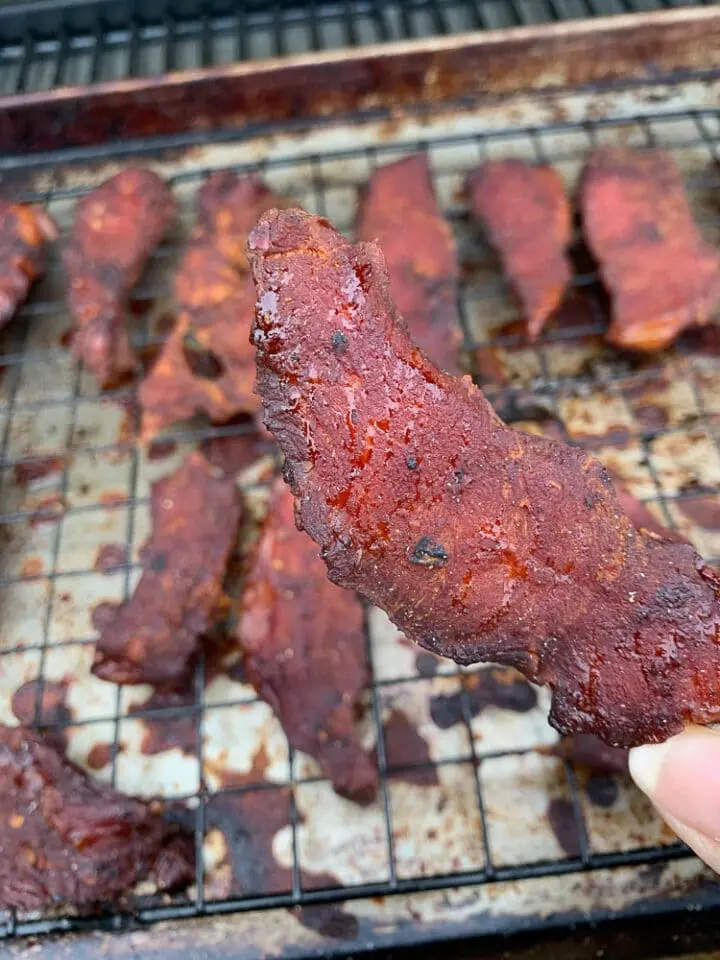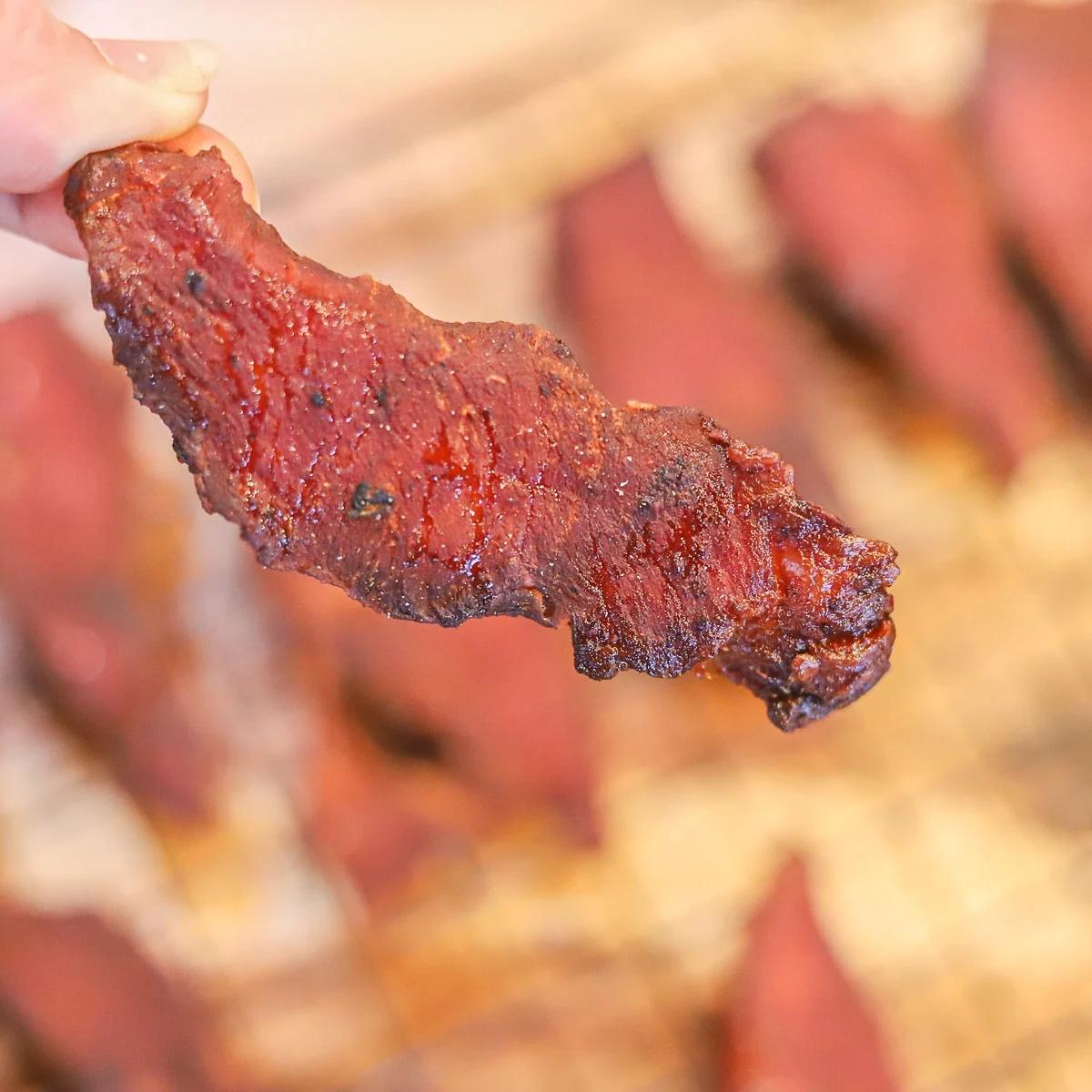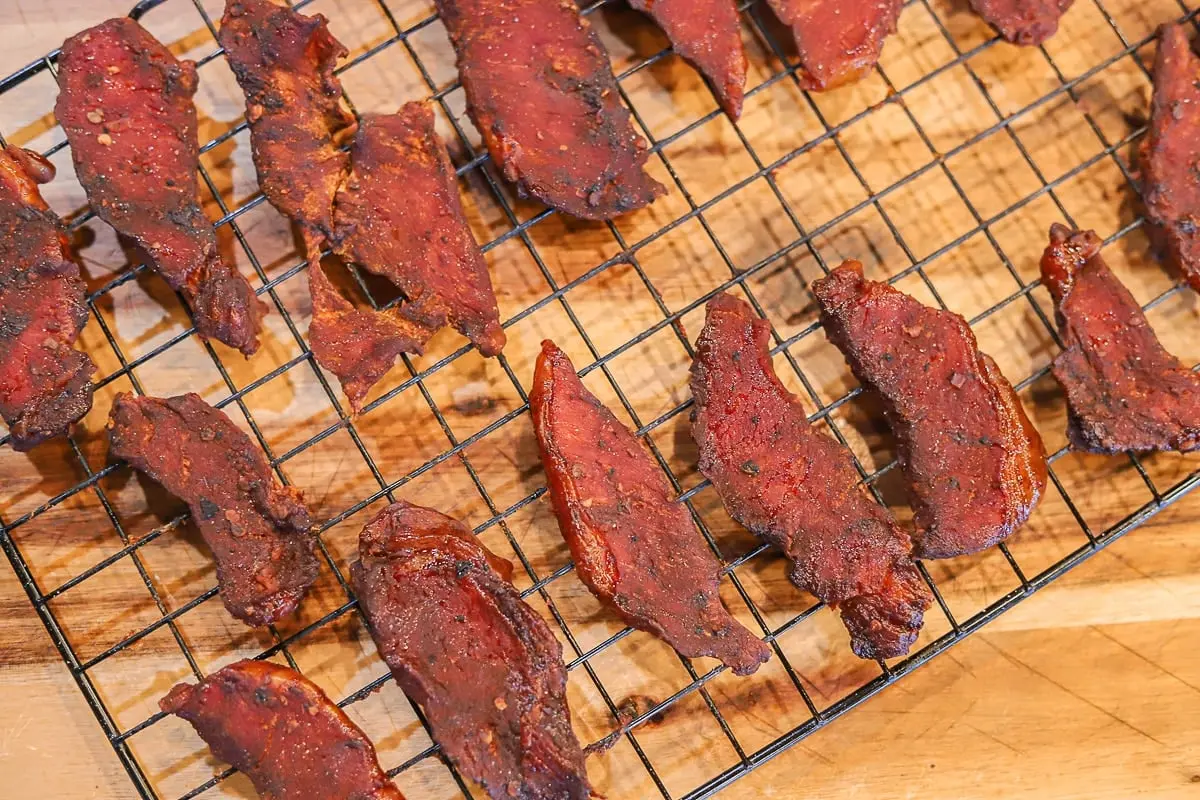Smoked pork jerky is a flavorful and convenient snack that can be enjoyed anywhere. Whether you're on a hiking trail or simply looking for a between-meal treat, pork jerky is a great choice. However, when making jerky at home, it's essential to follow proper safety guidelines to ensure that your jerky is safe to consume. In this article, we will explore the steps to make safe and delicious smoked pork jerky.

Is Pork Safe for Jerky?
When it comes to making jerky at home, pork can be a safe and tasty option. However, it's crucial to choose lean cuts of pork with 10 percent fat or less. Fat from meat can become rancid quickly, and excess fat may leak out of the dehydrator, affecting the quality of your jerky. Additionally, if you're using wild game or pork, it's essential to chill the meat rapidly after the kill and freeze it at 0 degrees F or colder for at least 30 days. This process helps eliminate the trichinella parasite that might be present in the meat.
For purchased pork, it should be refrigerated at 40 degrees F or below consistently before processing it into jerky to maintain its freshness and safety.
Preparing the Pork for Jerky
Before you start making smoked pork jerky, it's important to prepare the meat properly. Partially freezing the meat makes it easier to slice. The slices should be no more than ¼ inch thick. Slicing the meat with the grain creates a chewier texture, while slicing it against the grain gives a more tender and brittle product.
You can also tenderize the meat with a commercial product or use a marinade. A marinade typically consists of ingredients like salt, oil, spices, and some form of acid, such as vinegar, soy sauce, or citrus juice. The National Center for Home Food Preservation (NCHFP) provides a simple marinade recipe:
- 1 1/2 - 2 pounds lean pork
- 1/4 cup soy sauce
- 1 tablespoon Worcestershire sauce
- 1/4 teaspoon black pepper
- 1/4 teaspoon garlic powder
- 1/2 teaspoon onion powder
- 1 teaspoon hickory smoke-flavored salt
Combine the ingredients and mix them with the strips of pork in a shallow pan. Cover the pan and refrigerate the meat for 1-2 hours or overnight. To reduce the risk of foodborne illness, you can heat the meat and marinade by bringing them to a boil for five minutes before dehydrating. After marinating, drain the meat, blot off any excess liquid, and place it in the dehydrator.
Alternatively, you can use ground pork to make jerky. Add dried spices to flavor the meat, or you can use pre-made commercial seasoning blends. The ground meat strips should be no more than 1/4 inch thick.

Dehydrating the Pork Jerky
Properly dehydrating the pork jerky is crucial to ensure its safety and deliciousness. Preheat your dehydrator or oven to 145 degrees F or higher before arranging the jerky strips on trays or racks.
Check the jerky after approximately three hours of dehydrating. Blot off any excess oil with a paper towel. The meat should be firm, yet flexible, and reach an internal temperature of at least 160°F, as measured by a meat thermometer. After dehydrating, let the jerky cool, label it, and store it at room temperature for up to two weeks or in the freezer for up to three months.
If you didn't heat the strips in the marinade before drying, you can heat them in a preheated 275 degrees F oven for an additional 10 minutes after dehydrating as an added safety measure.
Food Safety Tips
When handling raw pork for jerky, it's essential to follow proper food safety practices. Keep raw meats separate from other foods to avoid cross-contamination. After contact with raw meat, wash cutting boards, utensils, countertops, and hands with hot soapy water. To sanitize after washing, rinse utensils, cutting boards, and countertops with a mixture of 1 teaspoon of bleach per quart of water.

Smoked pork jerky is a delicious and convenient snack option that can be enjoyed by people of all ages. By following proper safety guidelines, such as using lean cuts of pork, chilling and freezing the meat when necessary, and dehydrating the jerky at the correct temperature, you can ensure that your homemade smoked pork jerky is not only tasty but also safe to eat. So, why not try making your own batch of smoked pork jerky at home and enjoy this flavorful snack whenever you want?
If you want to know other articles similar to Delicious and safe smoked pork jerky: a guide you can visit the Food safety category.


Related Articles